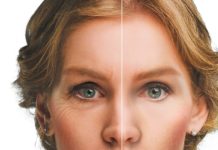It might surprise you, but nearly 10-20% of children around the world struggle with the ongoing itchiness and discomfort of atopic dermatitis. And for adults? The battle continues for 1-3%. But there’s a glimmer of hope on the horizon, thanks to innovative dermatitis treatments that are making a difference in the medical field. If you or someone you care about is dealing with this, don’t lose hope. Discover the revolutionary treatments that are bringing comfort to millions. If you start exploring the options below, you can find the way to healthier, more comfortable skin.
Approaches to Treating Dermatitis
Treatments for Applying on Skin
Corticosteroids
Corticosteroids are often prescribed to treat dermatitis due to their strong anti-inflammatory effects. These creams and ointments reduce inflammation, itching, and redness connected to the condition.
They provide quick relief and come in different forms like creams, ointments, lotions, and gels. Corticosteroids dampen the immune response and stop the release of inflammatory substances.
Non-Steroidal Topical Creams
Non-steroidal topical creams, known as calcineurin inhibitors, offer an alternative to corticosteroids for dermatitis treatment—these creams work by changing the immune response and reducing skin inflammation.
They are particularly useful for sensitive areas where corticosteroids might cause unwanted side effects, like the face and genital area. Non-steroidal creams are generally safe for long-term use and effective for mild to moderate cases of dermatitis.
Topical Immune Modulators
Newer medications like crisaborole are used to treat dermatitis. These creams target specific immune responses in the skin, helping to ease inflammation and itching.
By blocking enzymes responsible for inflammation, these creams help the skin return to normal. They are usually well-tolerated and provide a non-steroidal option for individuals with mild to moderate dermatitis.
Medications Taken by Mouth
Antihistamines
Antihistamines are commonly used in dermatitis treatment to relieve symptoms like itching and inflammation. These medicines block the effects of histamine, a chemical released during allergic reactions that causes itching and swelling.
While antihistamines can provide temporary relief, they don’t address the underlying cause of dermatitis. They are often used alongside other treatments to manage symptoms and improve comfort.
Oral Corticosteroids
In severe cases of dermatitis, oral corticosteroids may be prescribed to reduce inflammation and suppress the immune system’s response. These medications provide systemic relief and can work well for short-term use.
However, due to potential side effects like weight gain, mood changes, and increased vulnerability to infections, oral corticosteroids are generally used for acute flare-ups and aren’t recommended for long-term use.
Immunosuppressants
Immunosuppressant drugs like cyclosporine or methotrexate might be prescribed for people with severe, chronic dermatitis that doesn’t respond to other treatments. These drugs suppress the immune system to reduce inflammation and control symptoms.
Immunosuppressants carry potential risks and need close monitoring by a healthcare professional. They are generally used when other options are exhausted, or when dermatitis significantly affects a person’s quality of life.
Light Therapy and Phototherapy
UVB Phototherapy
UVB phototherapy exposes the affected skin to ultraviolet B (UVB) light. This treatment helps reduce inflammation and itching linked to dermatitis.
UVB light goes into the skin and slows down the immune system response, which helps manage dermatitis symptoms. UVB phototherapy is usually done in a medical setting with proper supervision to ensure the right dosage and minimize potential side effects like sunburn or an increased risk of skin cancer.
PUVA (Psoralen plus UVA) Therapy
PUVA therapy combines psoralen, a photosensitizing medication, with UVA light exposure. Psoralen makes the skin more sensitive to UVA light, allowing it to penetrate deeper layers of the skin.
This therapy helps reduce inflammation, itching, and the excessive immune response seen in dermatitis. PUVA therapy is often used for severe cases that haven’t responded to other treatments.
However, long-term use of PUVA therapy has risks, including an increased risk of skin aging and skin cancer. Regular monitoring is important during and after the treatment.
Excimer Laser Therapy
Excimer laser therapy directs a focused UVB light beam to specific areas of the skin affected by dermatitis. This treatment approach allows precise targeting of particular lesions or patches of dermatitis, minimizing exposure to healthy skin.
Excimer laser therapy reduces inflammation, promotes healing, and improves the skin’s appearance. It’s often used for localized areas of dermatitis that haven’t responded well to other treatments.
Like other forms of phototherapy, excimer laser therapy should be administered by a healthcare professional and requires careful monitoring for optimal results.
Using Wet Dressings and Bandages
Wet dressings and bandages are commonly used to treat dermatitis by relieving itching, inflammation, and promoting healing. This method involves placing a cool, wet compress or dressing on the affected skin.
The moisture from the dressing hydrates the skin, soothes irritation, and reduces itching. It also acts as a barrier, preventing further damage or infection.
Wet dressings are particularly effective for sudden flare-ups or when there are open sores or blisters. They’re usually applied for a short time under the guidance of a healthcare professional.
Natural and Alternative Treatments
Aloe Vera, Chamomile, and Calendula
Aloe vera, chamomile, and calendula are natural remedies often used in dermatitis treatment due to their soothing and anti-inflammatory properties.
Aloe vera gel can be applied directly to reduce redness and promote healing.
Chamomile tea or oil can be used as a compress or added to bath water to soothe irritated skin.
Calendula ointment or creams may help relieve itching and inflammation.
These natural remedies can offer temporary relief and are generally safe to use. However, it’s advisable to consult a healthcare professional before trying new treatments.
Tea Tree Oil and Coconut Oil
Tea tree oil and coconut oil are natural ingredients that might help alleviate dermatitis symptoms. Tea tree oil has antimicrobial and anti-inflammatory properties and can be diluted and applied directly to affected areas.
Coconut oil is known for its moisturizing properties and may help hydrate the skin and reduce itching. To avoid adverse reactions, use these oils in moderation and do a patch test before applying them.
It’s also recommended to consult with a healthcare professional before using these natural remedies.
Oatmeal Baths and Colloidal Oatmeal Products
Oatmeal has long been used to soothe and relieve itching in various skin conditions, including dermatitis. Taking oatmeal baths or using colloidal products can help reduce inflammation and alleviate itching.
Oatmeal is a natural moisturizer that helps restore the skin’s protective barrier. These products are widely available over the counter and can be used regularly in skincare.
However, if symptoms persist or worsen, it’s important to consult a healthcare professional for further evaluation and guidance.
Atopic Dermatitis (Eczema) Treatments
Emollients and Moisturizers
Emollients and moisturizers are essential for managing atopic dermatitis (eczema). These products help hydrate and soften the skin, relieve itchiness, and prevent dryness and flare-ups.
They create a protective layer on the skin’s surface, reducing moisture loss and locking in hydration. To get the best results, apply emollients and moisturizers liberally and regularly, especially after bathing.
Different emollients and moisturizers, including creams, ointments, lotions, and oils, are available. It’s important to choose fragrance-free, hypoallergenic products that are suitable for sensitive skin.
Avoiding Triggers and Irritants
Identifying and avoiding triggers and irritants is crucial for managing atopic dermatitis. Common triggers include certain fabrics, harsh soaps or cleansers, fragrances, excessive heat or sweating, and allergens like pet dander or pollen.
People with atopic dermatitis can reduce the frequency and severity of flare-ups by minimizing exposure to these triggers. It can be helpful to wear soft, breathable clothing, use gentle, hypoallergenic cleansers, maintain a consistent skincare routine, and keep the environment clean and free from potential allergens.
Antihistamines for Itch Relief
Antihistamines are commonly used to alleviate the intense itching associated with atopic dermatitis. These medications block the effects of histamine, a chemical released during allergic reactions that can cause itching, redness, and swelling.
Antihistamines can help reduce itchiness, promote better sleep, and improve overall comfort. However, it’s important to note that antihistamines may cause drowsiness in some individuals, so it’s wise to consult a healthcare professional before using them, especially if you’ll be driving or operating machinery.
Immunomodulators: Tacrolimus and Pimecrolimus
Tacrolimus and pimecrolimus are immunomodulator medications that can be applied topically to manage atopic dermatitis. They work by modifying the immune response in the skin, reducing inflammation and suppressing the overactive immune reaction seen in eczema.
These medications are usually prescribed when other treatments don’t work well or for moderate to severe atopic dermatitis. Regular monitoring is important during treatment to minimize potential side effects and ensure optimal results.
Biologic Medications and Targeted Therapies
For severe cases of atopic dermatitis that don’t respond to other treatments, biologic medications and targeted therapies might be considered. Biologics are medications made from living organisms that target specific molecules involved in the immune system response.
They help reduce inflammation and symptoms of atopic dermatitis. These medications are typically given through injections or infusions and need close monitoring by a healthcare professional due to potential side effects.
Biologics and targeted therapies offer new options for treatment in severe atopic dermatitis cases, providing hope for improved symptom control and quality of life.
Contact Dermatitis Treatments
Identifying and Avoiding Allergens
The first step in treating contact dermatitis is identifying and avoiding the allergens or irritants that trigger the condition. This might involve thorough examination and testing to pinpoint the specific substances causing the reaction.
Once identified, individuals should take necessary precautions to minimize exposure to these triggers. This might involve avoiding certain cosmetics, detergents, metals, or plants that trigger a reaction.
By eliminating or reducing contact with allergens, individuals can prevent flare-ups and alleviate symptoms associated with contact dermatitis.
Use of Barrier Creams and Ointments
Barrier creams and ointments are commonly used in contact dermatitis treatment to protect the skin from irritants and promote healing. These products create a physical barrier on the skin, preventing allergens or irritants from directly touching the affected area.
Barrier creams and ointments also help soothe and moisturize the skin, reducing inflammation and itchiness. It’s important to choose products specifically designed for contact dermatitis and apply them generously to the affected area as part of a skincare routine.
Healing Creams with Anti-Inflammatory Properties
Healing creams containing anti-inflammatory ingredients can be helpful in reducing inflammation and promoting the healing process in contact dermatitis. These creams often contain ingredients like hydrocortisone, which helps reduce redness, itching, and swelling.
Other natural anti-inflammatory ingredients like chamomile or aloe vera might also be included. Regularly applying healing creams can help soothe the skin, reduce discomfort, and speed up healing.
Oral Antihistamines for Allergic Reactions
If contact dermatitis triggers an allergic reaction, oral antihistamines might be prescribed to relieve symptoms. Antihistamines block the effects of histamine, a chemical released during allergic reactions that causes itching, redness, and swelling.
These medications can help reduce the severity of allergic reactions and alleviate discomfort caused by contact dermatitis. It’s important to consult with a healthcare professional before using oral antihistamines to determine the appropriate dosage and to ensure they’re safe and suitable for individual needs.
Seborrheic Dermatitis Treatments
Medicated Shampoos and Cleansers
Medicated shampoos and cleansers are crucial for treating seborrheic dermatitis. These products contain active ingredients like ketoconazole, zinc pyrithione, or coal tar, which help control the overgrowth of yeast on the skin and reduce inflammation.
They cleanse the affected areas, remove excess oil and flakes, and alleviate itching. It’s important to follow the instructions provided by a healthcare professional or product labeling for proper usage and frequency.
Topical Antifungal Creams
Topical antifungal creams are commonly used to treat seborrheic dermatitis, especially on areas other than the scalp. These creams contain antifungal agents like clotrimazole or miconazole, which target the yeast responsible for the condition.
By inhibiting the growth of yeast, these creams help reduce inflammation and alleviate symptoms. It’s important to apply them as directed by a healthcare professional and continue treatment for the recommended duration to ensure effective results.
Corticosteroid Lotions for Scalp Relief
Corticosteroid lotions can relieve inflammation and itching for seborrheic dermatitis on the scalp. These lotions contain corticosteroids, which have anti-inflammatory properties and help reduce redness, swelling, and irritation.
When applied to the scalp, they can alleviate symptoms and promote healing. However, prolonged use of corticosteroids may have side effects, so it’s important to follow the prescribed usage instructions and consult a healthcare professional for guidance.
Anti-Dandruff Products and Selenium Sulfide
Anti-dandruff products containing active ingredients like selenium sulfide can effectively manage seborrheic dermatitis. These products help control the overgrowth of yeast and decrease flaking and scaling.
Selenium sulfide has antifungal properties and can reduce the severity of symptoms. Regularly using anti-dandruff shampoos or creams containing selenium sulfide can help manage seborrheic dermatitis and prevent flare-ups.
It’s important to follow the instructions provided by the manufacturer or a healthcare professional for proper usage and treatment duration.






















